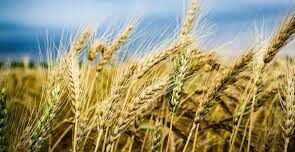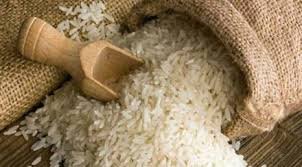Which Indian State is Known as the Breadbasket of India?
India, a vast country with diverse geography, boasts several regions that contribute significantly to its agricultural productivity. Among these, one state stands out as the “Breadbasket of India” due to its high agricultural output. This state is Punjab, which has earned this title due to its pivotal role in India’s food security.
Punjab: The Breadbasket of India
Punjab, located in the northern part of India, is often referred to as the “Granary of India” or the “Breadbasket of India.” The state has earned this name because of its rich soil, favorable climate, and extensive irrigation infrastructure that supports the cultivation of various crops, particularly wheat and rice. Punjab contributes a substantial percentage of the total food grain production in India, which is vital for both domestic consumption and export.
Agricultural Significance of Punjab
The fertile soil of Punjab, combined with modern farming techniques, has made it one of the most agriculturally advanced states in the country. The introduction of high-yielding varieties of seeds, along with the use of chemical fertilizers and pesticides, has significantly increased the state’s crop productivity. Punjab’s contribution to the national wheat and rice production is critical, as it accounts for around 40% of India’s wheat and 25% of its rice production.
Importance of the Green Revolution
Punjab’s role in the Green Revolution of the 1960s further solidified its position as the breadbasket of India. The Green Revolution, which introduced new agricultural techniques, modern irrigation methods, and high-yielding varieties of seeds, transformed Punjab into a major agricultural hub. This led to increased food production and self-sufficiency, particularly in wheat and rice, which were essential for feeding the growing population of India.

Why this News is Important
Role in National Food Security
The news about Punjab being the Breadbasket of India highlights its critical role in ensuring national food security. The state produces a significant portion of the country’s staple grains, especially wheat and rice, which form the foundation of India’s food supply. As India continues to face challenges such as population growth and climate change, regions like Punjab will remain essential in ensuring the country can meet its food demand. Understanding this significance is crucial for government exam aspirants who need to be aware of India’s agricultural geography and its economic importance.
Economic and Social Impact
Punjab’s agricultural success has had far-reaching economic and social impacts. The state’s economy heavily relies on agriculture, and its farming community plays a pivotal role in sustaining this economy. Moreover, the agricultural practices in Punjab have influenced farming techniques across the country. For civil service aspirants, especially those in administrative or agricultural sectors, understanding the historical and current role of Punjab’s agriculture in national policy and governance is key to answering exam questions related to agricultural reforms, food security, and rural development.
Historical Context
Pre-Independence Agricultural Development
Before the British colonial period, agriculture in Punjab was relatively primitive. However, the fertile lands along the Indus River were ideal for growing crops like wheat and barley. With the advent of British rule, Punjab’s agricultural landscape changed as the British introduced new crops and irrigation techniques, transforming the region into an important agricultural hub for the British Empire.
The Green Revolution and Modernization
The most significant event in Punjab’s agricultural history was the Green Revolution in the 1960s, which was aimed at increasing food production in India to combat food shortages. Punjab was the epicenter of this movement, with the introduction of high-yielding varieties of wheat and rice. Government policies promoting irrigation, mechanization, and chemical fertilizers helped boost agricultural productivity. This revolution not only made Punjab the Breadbasket of India but also shaped the country’s agricultural policies in the following decades.
Key Takeaways from “Which Indian State is Known as the Breadbasket of India?”
| Serial No. | Key Takeaway |
|---|---|
| 1 | Punjab is known as the “Breadbasket of India” due to its significant contribution to the country’s wheat and rice production. |
| 2 | The state accounts for around 40% of India’s wheat and 25% of its rice production, playing a crucial role in national food security. |
| 3 | Punjab’s agricultural success was significantly influenced by the Green Revolution in the 1960s, which introduced high-yielding varieties and modern farming techniques. |
| 4 | The state has a favorable climate, fertile soil, and extensive irrigation systems that support large-scale crop production. |
| 5 | Understanding Punjab’s role in agriculture is essential for government exams, particularly for questions on food security, rural development, and agricultural policy. |
Important FAQs for Students from this News
What is the Breadbasket of India?
- Punjab is known as the Breadbasket of India due to its substantial contribution to the country’s wheat and rice production, making it a key player in national food security.
Why is Punjab referred to as the Granary of India?
- The state is referred to as the Granary of India because of its high agricultural productivity, especially in wheat and rice, which significantly contribute to India’s food supply.
What percentage of India’s wheat and rice does Punjab contribute?
- Punjab accounts for around 40% of India’s wheat production and 25% of its rice production.
What role did the Green Revolution play in Punjab’s agricultural development?
- The Green Revolution of the 1960s introduced high-yielding varieties of wheat and rice, modern irrigation methods, and advanced farming techniques that transformed Punjab into an agricultural powerhouse.
How does Punjab’s climate contribute to its agricultural success?
- Punjab’s climate, combined with fertile soil and well-developed irrigation systems, creates an ideal environment for growing crops like wheat and rice in large quantities.
Some Important Current Affairs Links


















